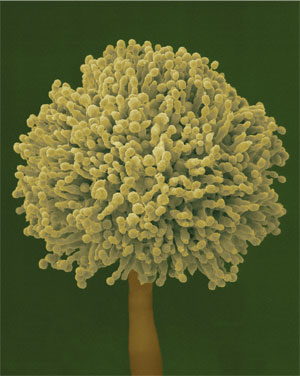 The symptom of mold allergy is highly comparable to those signs of other allergic reactions, such as sneezing, nasal discharge, itching, congestion and scaling, dry skin. A few individuals with mold allergies can have allergic reaction symptoms the whole summer due to outdoor molds. if those symptoms are caused by indoor molds.
The symptom of mold allergy is highly comparable to those signs of other allergic reactions, such as sneezing, nasal discharge, itching, congestion and scaling, dry skin. A few individuals with mold allergies can have allergic reaction symptoms the whole summer due to outdoor molds. if those symptoms are caused by indoor molds.Mold spores may accumulate in the nose lining and induce symptoms of hay fever. They also may get into the lung, to induce asthma or additional serious sickness called allergic bronchopulmonary aspergillosis.
Occasionally the response is instant, and occasionally the physical reaction is deferred. Signs frequently aggravate in a moist or musty room like the cellar; it may hint mold allergy.

 It is normal for individuals to suffer mold allergy if these people or any family members are highly allergic to foreign objects such as animal dander or pollen. Some people may become very allergic to only fungi or mold, or they may also suffer illnesses related to pollens, dust mites and other kind of spores. If you're allergic to just fungi, it's improbable that you'd be annoyed by all fungus kingdom. The diverse kinds of mold spores have only few similarities.
It is normal for individuals to suffer mold allergy if these people or any family members are highly allergic to foreign objects such as animal dander or pollen. Some people may become very allergic to only fungi or mold, or they may also suffer illnesses related to pollens, dust mites and other kind of spores. If you're allergic to just fungi, it's improbable that you'd be annoyed by all fungus kingdom. The diverse kinds of mold spores have only few similarities. Mildew and mold are fungi. They different from plant life or animals creatures in how they multiply and develop. The "seed" known as spores, are dispersed by the air current outside and indoors. A few spores are spread in windy, dry climate. Others are spread with the dew or fog in high humidity.
Mildew and mold are fungi. They different from plant life or animals creatures in how they multiply and develop. The "seed" known as spores, are dispersed by the air current outside and indoors. A few spores are spread in windy, dry climate. Others are spread with the dew or fog in high humidity.